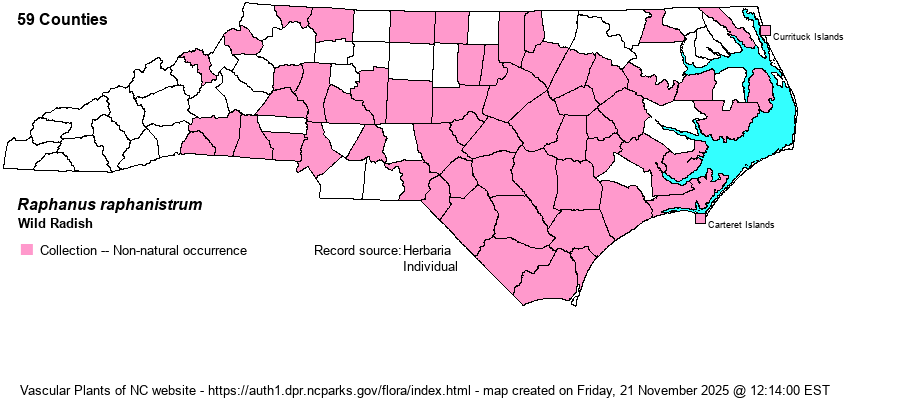| Author | L. | |
| Distribution | From the Outer Banks through the Piedmont; a few montane records for northern counties.
Native of Eurasia; in N.A. throughout the U.S. and most of Canada. | |
| Abundance | Common in most of the Coastal Plain and the eastern Piedmont, and frequent in the central and western Piedmont and the northern Coastal Plain; rare in the Mountains. | |
| Habitat | Fields, fallow fields, roadsides, barnyards, pastures, disturbed soil. Commonly grown as a winter cover, for food, and for medicinal uses. | |
| Phenology | Flowering and fruiting March-June. | |
| Identification | Wild Radish is a robust annual about 2 feet tall, and is glabrous. The basal leaves are oblanceolate or obovate, variously cut into irregular lobes. The stem leaves are much smaller, sessile, and irregularly toothed. The flowers are terminal and axillary, pale yellow or off-white with a few dark lines on the inside of the petals. The pods are torulose -- with a constriction between each seed, as in a legume pod. The species is very similar to Garden Radish (R. sativus), and the 2 taxa will hybridize. It differs mainly in flower color (purple to pink in Garden Radish). | |
| Taxonomic Comments | | |
| Other Common Name(s) | Jointed Charlock | |
| State Rank | SE | |
| Global Rank | GNR | |
| State Status | | |
| US Status | | |
| USACE-agcp | | |
| USACE-emp | | |

